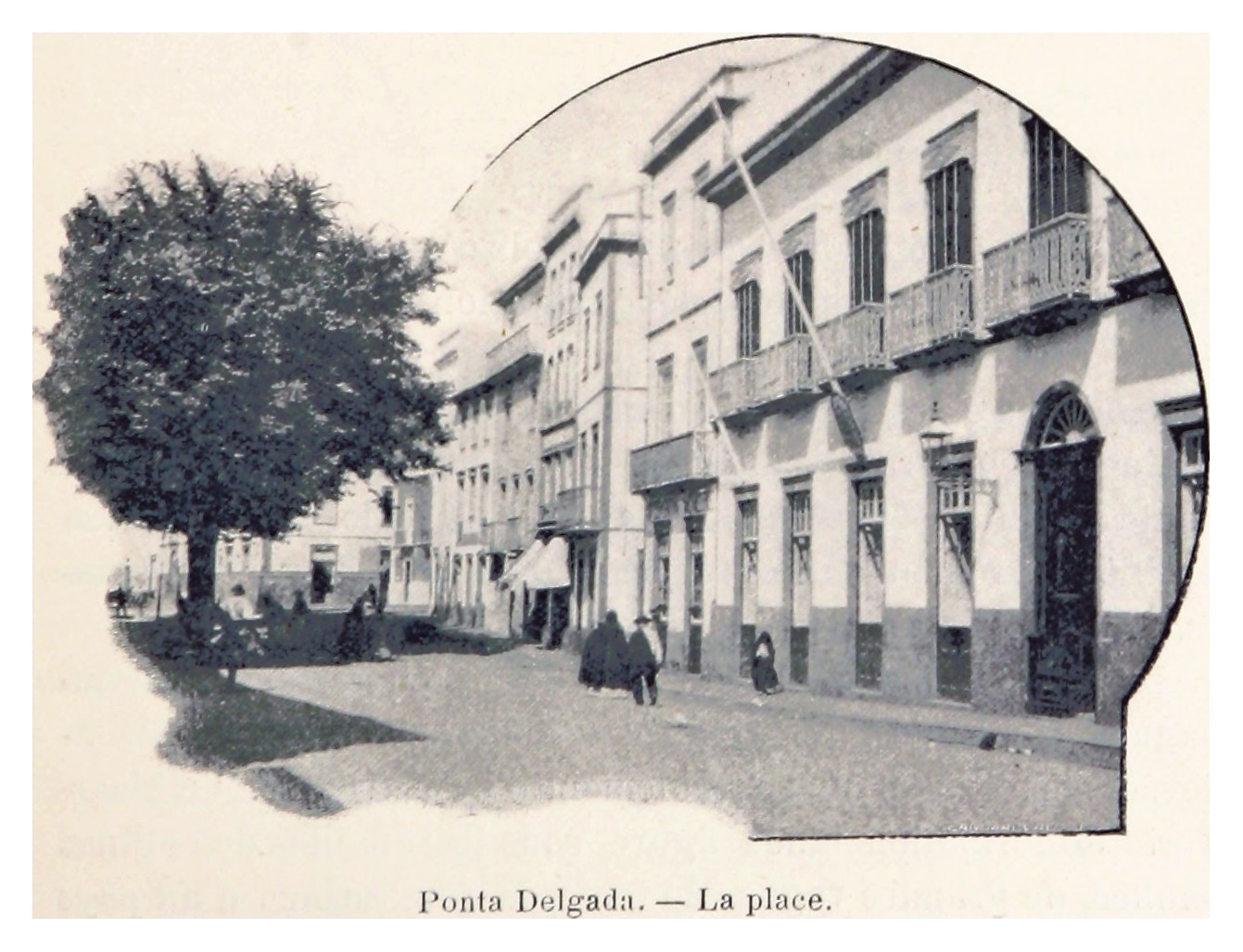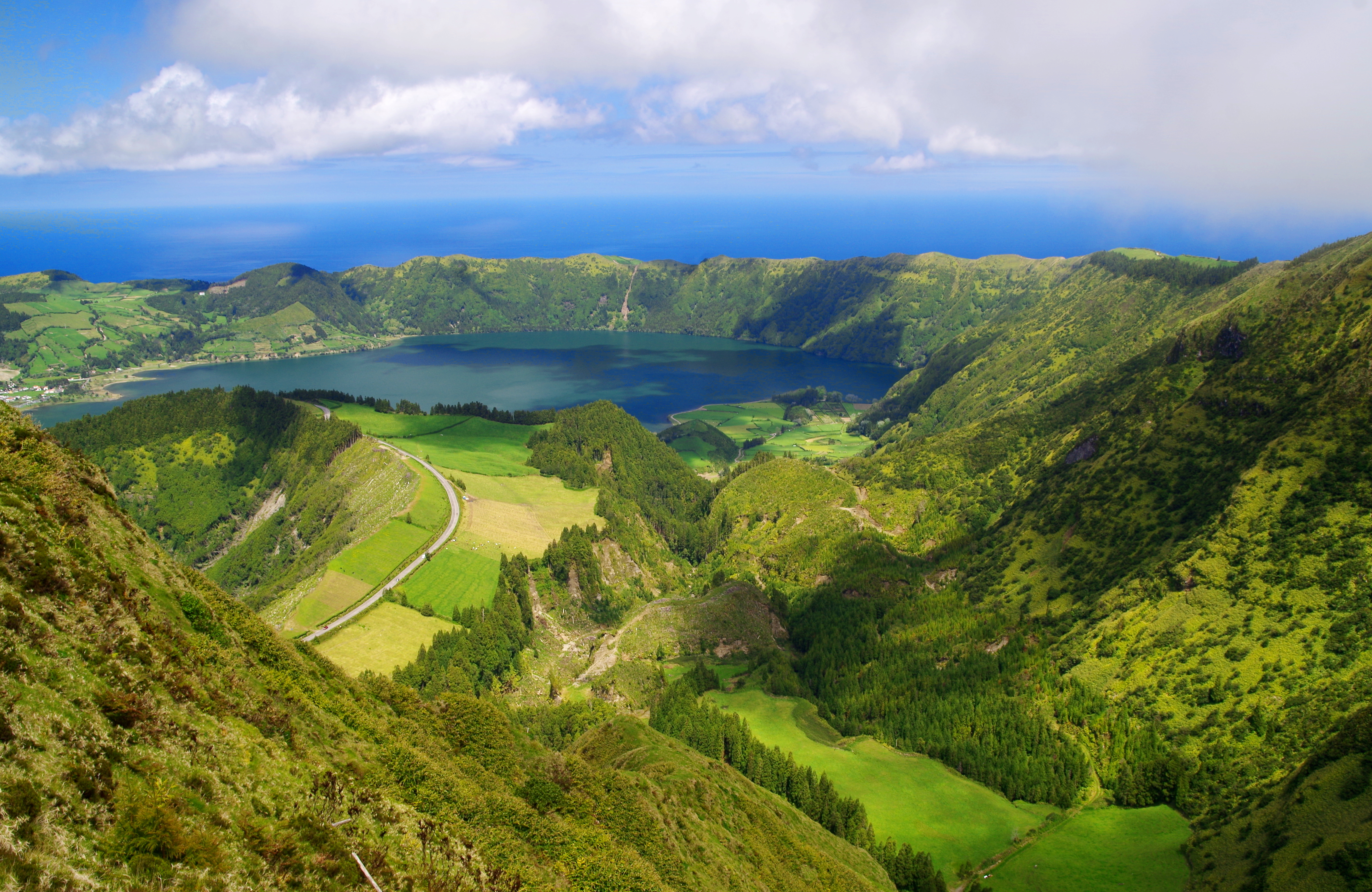|
Santa Bárbara (Ponta Delgada)
Santa Bárbara is a civil parish in the municipality of Ponta Delgada on the Portuguese island of São Miguel in the Azores. The population in 2011 was 855, in an area of 8.72 km². Santa Barbara is a relatively young administrative entity, established in 1986, being de-annexed from the neighboring parish of Santo António. Geography Santa Bárbara is sandwiched between Santo António (along the east and south), Remédios Remédios is a civil parish situated in along the northern coast of the municipality of Ponta Delgada in the Portuguese archipelago of the Azores. The population in 2011 was 931, in an area of . History The parochial church was built in 1958 by ... in the northwest, Sete Cidades to the southwest, and the Atlantic Ocean to the north. It is located in the northwestern part of the island of São Miguel. Apart from its church (to the invocation of Santa Bárbara), along with a few small commercial businesses, there is a restaurant and a local soccer fiel ... [...More Info...] [...Related Items...] OR: [Wikipedia] [Google] [Baidu] |
São Miguel Island
São Miguel Island (; Portuguese language, Portuguese for "Saint Michael"), nicknamed "The Green Island" (''Ilha Verde''), is the largest and most populous island in the Portugal, Portuguese archipelago of the Azores. The island covers and has around 140,000 inhabitants, with 45,000 people residing in Ponta Delgada, the archipelago's largest city. History In 1427, São Miguel became the second of the islands discovered by Gonçalo Velho Cabral to be settled by colonists from continental Portugal. This date is uncertain, as it is believed that the island was discovered between 1426 and 1437 and inscribed in portolans from the middle of the 15th century. Its discovery was later recorded by Priesthood (Catholic Church), Father Gaspar Frutuoso in the seminal history of the Azores, ''Saudades da Terra'', as he began: "This island of São Miguel where...we are, is mountainous and covered in ravines, and it was, when we discovered it, covered in trees...due to its humidity, with its ... [...More Info...] [...Related Items...] OR: [Wikipedia] [Google] [Baidu] |
Ponta Delgada
Ponta Delgada (; ) is the largest municipality (''concelho'') and economic capital of the Autonomous Region of the Azores in Portugal. It is located on São Miguel Island, the largest and most populous in the archipelago. As of 2021, it has 67,287 inhabitants, in an area of . There are 17,629 residents in the three central Freguesia (Portugal), civil parishes that comprise the historical city: São Pedro (Ponta Delgada), São Pedro, São Sebastião (Ponta Delgada), São Sebastião, and São José (Ponta Delgada), São José. Ponta Delgada became the region's administrative capital under the Political status of the Autonomous Region of the Azores, revised constitution of 1976; the judiciary and Catholic episcopal see, See remained in the historical capital of Angra do Heroísmo while the Legislative Assembly of the Azores was established in Horta (Azores), Horta. History The origin of the placename Ponta Delgada (Portuguese for ''delicate or thin point'') was elaborated by the ... [...More Info...] [...Related Items...] OR: [Wikipedia] [Google] [Baidu] |
Saint Barbara
Saint Barbara ( grc, Ἁγία Βαρβάρα; cop, Ϯⲁⲅⲓⲁ Ⲃⲁⲣⲃⲁⲣⲁ; ; ), known in the Eastern Orthodox Church as the Great Martyr Barbara, was an Early Christianity, early Christian Lebanese and Greek saint and martyr. Accounts place her in the 3rd century in Heliopolis Phoenicia, present-day Baalbek, Lebanon, and recent discovered texts in the Saida early church archives suggest her maternal grandmother is a descendant from Miye ou Miye village. There is no reference to her in the authentic early Christian writings nor in the original recension of Martyrologium Hieronymianum, Saint Jerome's martyrology. Despite the legends detailing her story, the earliest references to her supposed 3rd-century life do not appear until the 7th century, and veneration of her was common, especially in the East, from the 9th century.Harry F. Williams, "Old French Lives of Saint Barbara" ''Proceedings of the American Philosophical Society'' 119.2 (16 April 1975:156–185), wit ... [...More Info...] [...Related Items...] OR: [Wikipedia] [Google] [Baidu] |
Freguesia (Portugal)
''Freguesia'' (), usually translated as "parish" or "civil parish", is the third-level administrative subdivision of Portugal, as defined by the 1976 Constitution. It is also the designation for local government jurisdictions in the former Portuguese overseas territories of Cape Verde and Macau (until 2001). In the past, was also an administrative division of the other Portuguese overseas territories. The ''parroquia'' in the Spanish autonomous communities of Galicia and Asturias is similar to a ''freguesia''. A ''freguesia'' is a subdivision of a ''município'' (municipality). Most often, a parish takes the name of its seat, which is usually the most important (or the single) human agglomeration within its area, which can be a neighbourhood or city district, a group of hamlets, a village, a town or an entire city. In cases where the seat is itself divided into more than one parish, each one takes the name of a landmark within its area or of the patron saint from the usually cot ... [...More Info...] [...Related Items...] OR: [Wikipedia] [Google] [Baidu] |
Concelho
Concelho () is the Portuguese-language term for municipality, referring to the territorial subdivision in local government. In comparison, the word ''município'' () refers to the organs of State. This differentiation is still in use in Portugal and some of its former overseas provinces, but is no longer in use in Brazil following the abolition of these organs, in favour of the French prefecture system. It is similar to borough and council. History After the civil parish ( pt, freguesias), the Portuguese ''concelho'' is the most stable territorial subdivision within the country, with over 900 years of history. Founded in the royal charters attributed to parcels and territorial enclaves, in order to establish a presence by the Crown, rather than personal fiefdoms of the nobility and aristocracy. This municipal institution changed throughout history: many were abolished and reconstituted based on the political necessity; first they were subject to the specifics of each charter (wh ... [...More Info...] [...Related Items...] OR: [Wikipedia] [Google] [Baidu] |
Ponta Delgada (Azores)
Ponta Delgada (; ) is the largest municipality (''concelho'') and economic capital of the Autonomous Region of the Azores in Portugal. It is located on São Miguel Island, the largest and most populous in the archipelago. As of 2021, it has 67,287 inhabitants, in an area of . There are 17,629 residents in the three central civil parishes that comprise the historical city: São Pedro, São Sebastião, and São José. Ponta Delgada became the region's administrative capital under the revised constitution of 1976; the judiciary and Catholic See remained in the historical capital of Angra do Heroísmo while the Legislative Assembly of the Azores was established in Horta. History The origin of the placename Ponta Delgada (Portuguese for ''delicate or thin point'') was elaborated by the famous Portuguese chronicler, Father Gaspar Frutuoso, who wrote: In around 1450, Pêro de Teive established a small fishing village that eventually grew into the urban agglomeration in Santa ... [...More Info...] [...Related Items...] OR: [Wikipedia] [Google] [Baidu] |
Portugal
Portugal, officially the Portuguese Republic ( pt, República Portuguesa, links=yes ), is a country whose mainland is located on the Iberian Peninsula of Southwestern Europe, and whose territory also includes the Atlantic archipelagos of the Azores and Madeira. It features the westernmost point in continental Europe, and its Iberian portion is bordered to the west and south by the Atlantic Ocean and to the north and east by Spain, the sole country to have a land border with Portugal. Its two archipelagos form two autonomous regions with their own regional governments. Lisbon is the capital and largest city by population. Portugal is the oldest continuously existing nation state on the Iberian Peninsula and one of the oldest in Europe, its territory having been continuously settled, invaded and fought over since prehistoric times. It was inhabited by pre-Celtic and Celtic peoples who had contact with Phoenicians and Ancient Greek traders, it was ruled by the Ro ... [...More Info...] [...Related Items...] OR: [Wikipedia] [Google] [Baidu] |
Azores
) , motto =( en, "Rather die free than subjected in peace") , anthem= ( en, "Anthem of the Azores") , image_map=Locator_map_of_Azores_in_EU.svg , map_alt=Location of the Azores within the European Union , map_caption=Location of the Azores within the European Union , subdivision_type=Sovereign state , subdivision_name=Portugal , established_title=Settlement , established_date=1432 , established_title3=Autonomous status , established_date3=30 April 1976 , official_languages=Portuguese , demonym= ( en, Azorean) , capital_type= Capitals , capital = Ponta Delgada (executive) Angra do Heroísmo (judicial) Horta (legislative) , largest_city = Ponta Delgada , government_type=Autonomous Region , leader_title1=Representative of the Republic , leader_name1=Pedro Manuel dos Reis Alves Catarino , leader_title2= President of the Legislative Assembly , leader_name2= Luís Garcia , leader_title3= President of the Regional Government , leader_name3=José Manuel Bolieiro , le ... [...More Info...] [...Related Items...] OR: [Wikipedia] [Google] [Baidu] |
Santo António (Ponta Delgada)
Santo António ( Portuguese for "Saint Anthony") is a parish in the district of Ponta Delgada in the Azores ) , motto =( en, "Rather die free than subjected in peace") , anthem= ( en, "Anthem of the Azores") , image_map=Locator_map_of_Azores_in_EU.svg , map_alt=Location of the Azores within the European Union , map_caption=Location of the Azores wi .... The population in 2011 was 1,829, in an area of 11.75 km². It is located in the northwestern part of the island of São Miguel. References {{DEFAULTSORT:Santo Antonio (Ponta Delgada) Parishes of Ponta Delgada ... [...More Info...] [...Related Items...] OR: [Wikipedia] [Google] [Baidu] |
Remédios
Remédios is a civil parish situated in along the northern coast of the municipality of Ponta Delgada in the Portuguese archipelago of the Azores. The population in 2011 was 931, in an area of . History The parochial church was built in 1958 by order of D. Manuel Afonso de Carvalho, bishop of Angra.DRAC (2010), p.34 The parish was elevated to the status of civil parish two years later, in 1960, when it was de-annexed from the territory of Bretanha. Geography It is located in the northwestern part of the island of São Miguel, and includes the flanks of the Sete Cidades Massif, covered in ''laurisilva Laurel forest, also called laurisilva or laurissilva, is a type of Subtropics, subtropical forest found in areas with high humidity and relatively stable, mild temperatures. The forest is characterized by broadleaf tree species with evergreen, glo ...'' and endemic plant species to the coastal cliffs. References Notes Sources * {{DEFAULTSORT:Remedios Parishes of Ponta De ... [...More Info...] [...Related Items...] OR: [Wikipedia] [Google] [Baidu] |
Sete Cidades (Ponta Delgada)
Sete Cidades is a civil parish in the center of the municipality of Ponta Delgada, that is likewise located in the center of a massive volcanic crater three miles across, also referred to as Sete Cidades. The population in 2011 was 793, in an area of 19.19 km2. It is one of the smallest parishes of Ponta Delgada by population, although the largest in area. It contains the localities Cerrado da Ladeira, Cerrado das Freiras and Sete Cidades. History Latin origins The region received its geographic nomenclature from the Latin ''Insula Septem Civitatum'', which means Island of the Seven Tribes or Island of the Seven Peoples (Portuguese: ''Ilha das Sete Tribos'' or ''Ilha dos Sete Povos''), but became a historical reference as the Island of the Seven Cities. This comes from classical Latin, probably incorporated into the older traditions of Mediterranean peoples, through the navigators of European antiquity, or the Phoenicians. In Latin, ''civitas'' does not signify ''city'', bu ... [...More Info...] [...Related Items...] OR: [Wikipedia] [Google] [Baidu] |


.jpg)

_(cropped).jpg)
